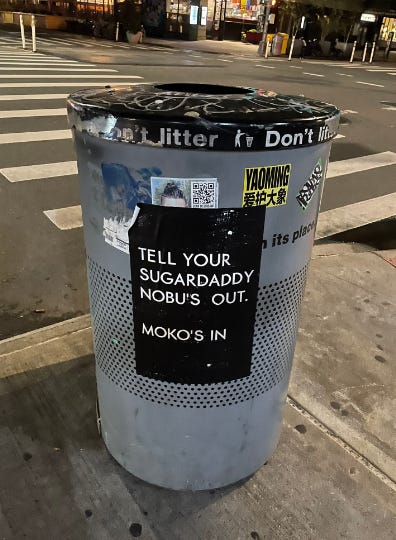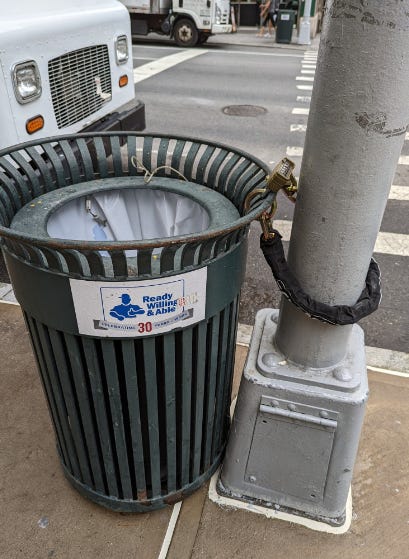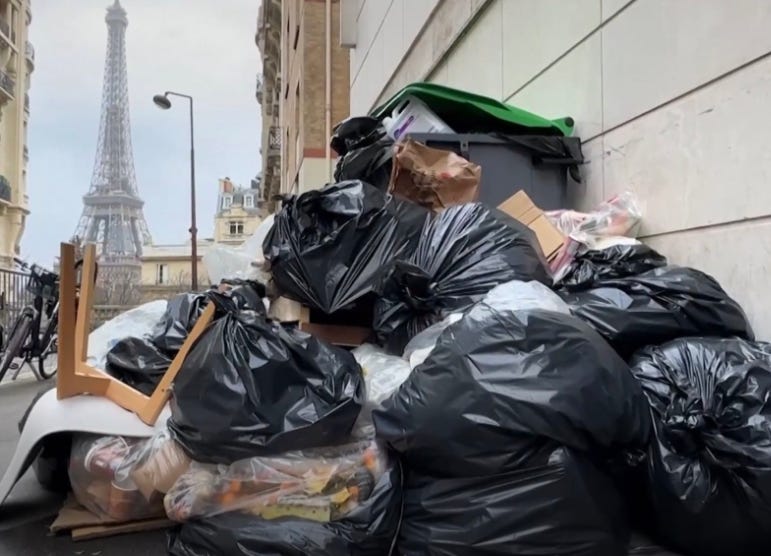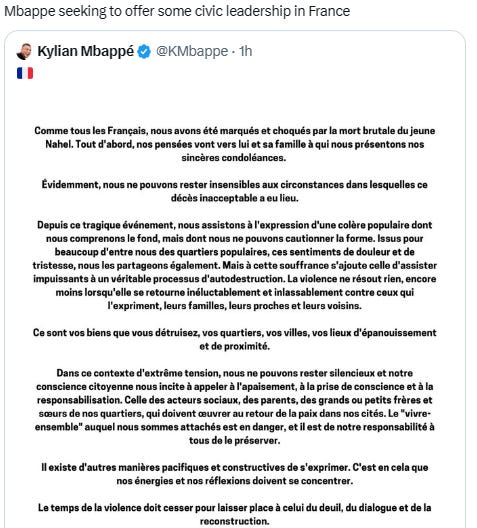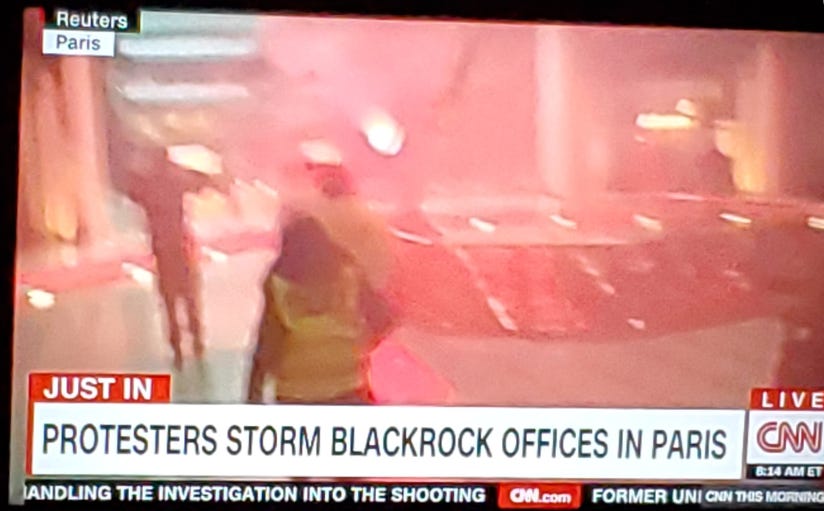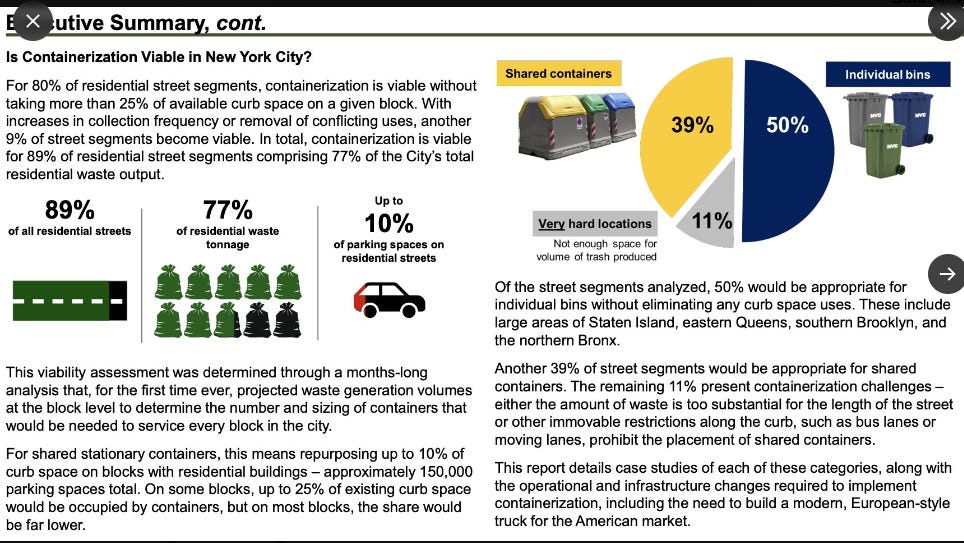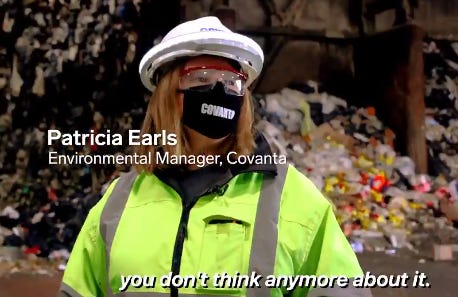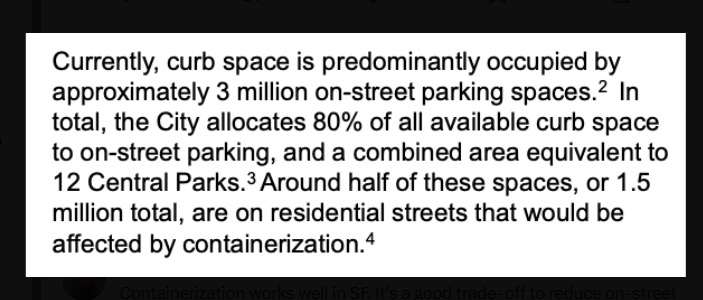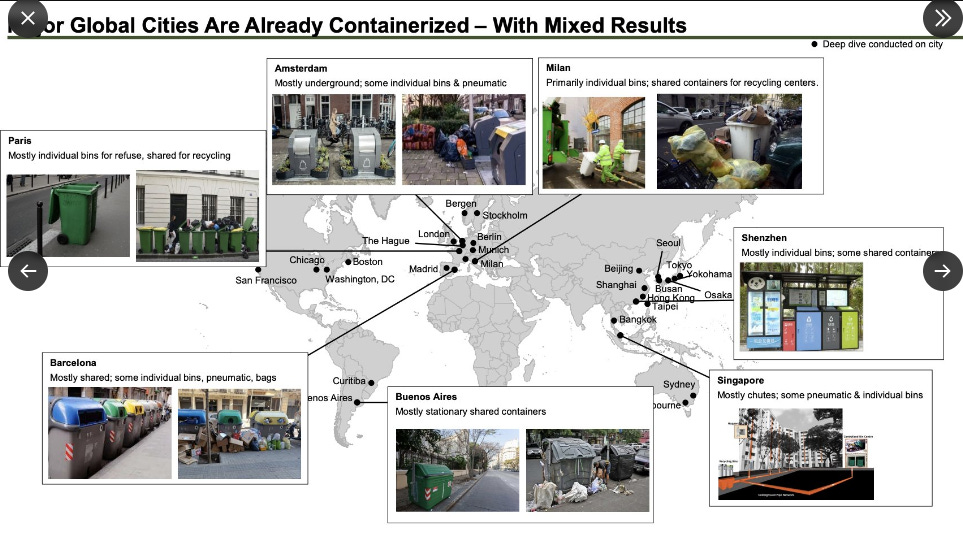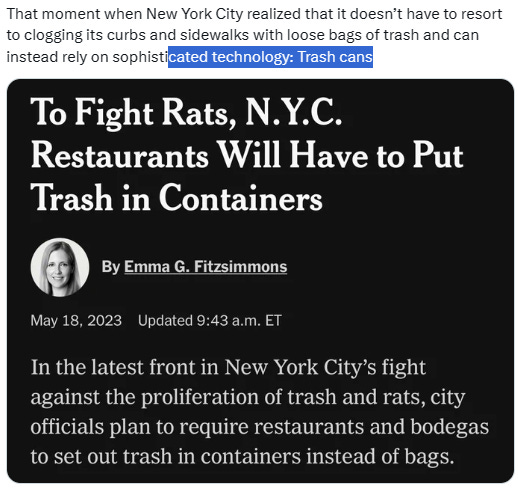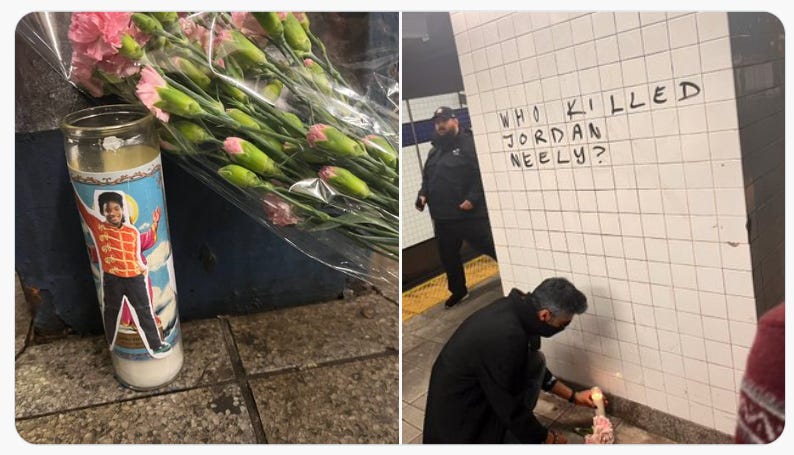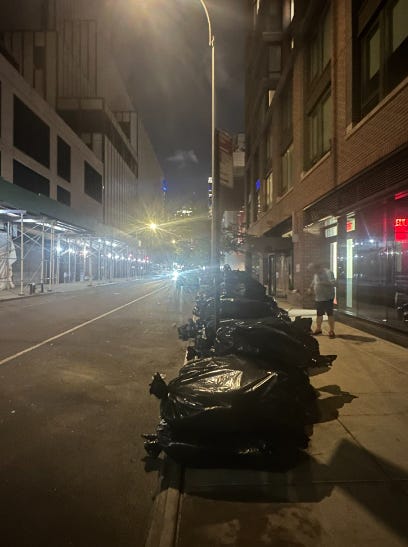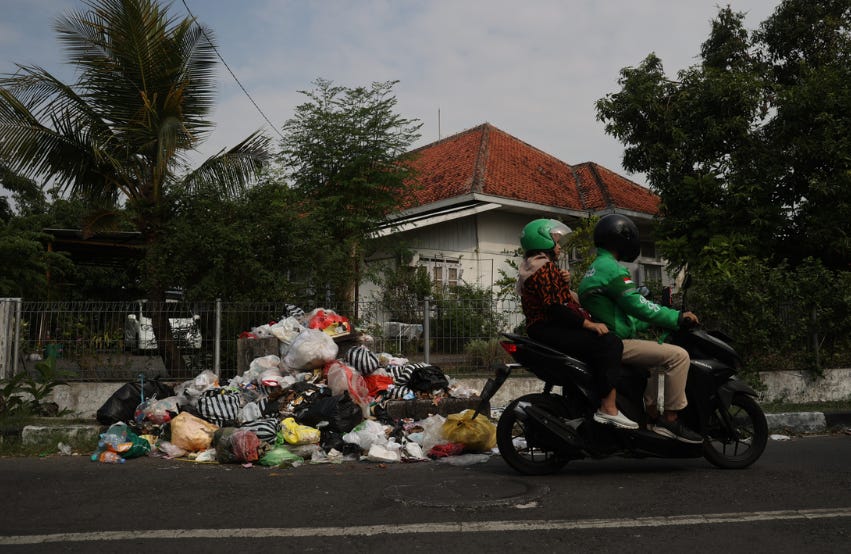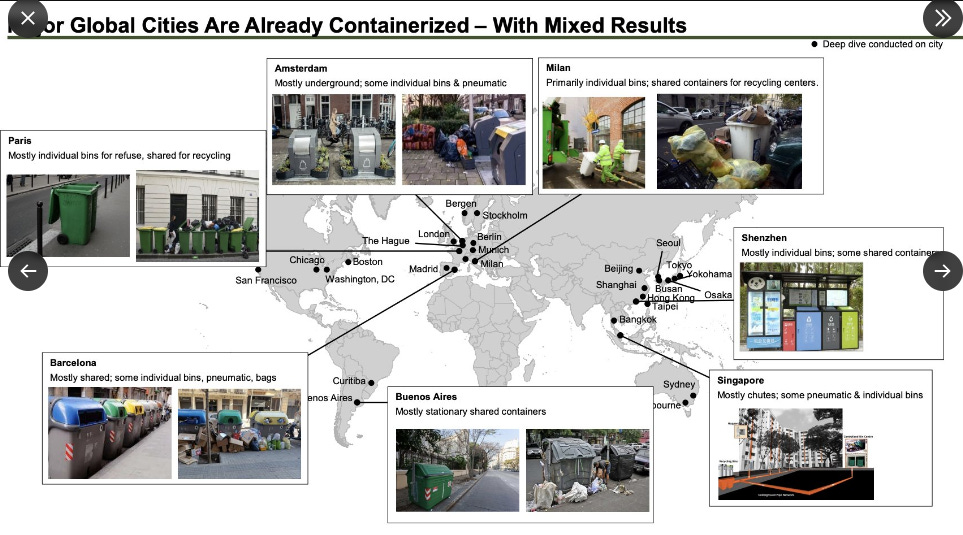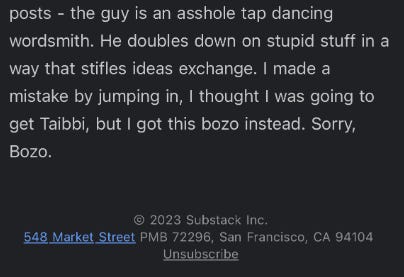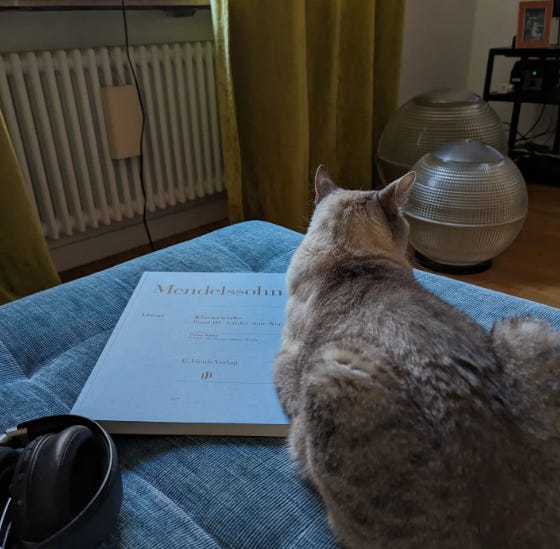NYC 5.40am / Jakarta 4.40pm / Singapore 5.40pm / Paris 11.40am
There’s literally an entire empty curb lane, yet trash is piled on the sidewalk. Trash should be containerized and in the curb, plain and simple, in every city in the world. Should. Putting trash in containers is the norm around the world, and would rid. Greatest city on earth, New York City of trash on the streets and rats everywhere — but it would take up some parking spaces, so who can say whether it's worthwhile or not. Everyone deserves the dignity of a clean community.
But Paris smells like garbage during massive-entire strike months ago (March-April). The massive accumulation of trash in France’s capital is one of the most visible—and smelly—signs of the opposition to Emmanuel Macron’s pension reform. Parisians are desperate for exactly the opposite. After a three-week trash collectors’ strike, and with over 10,000 tons of garbage piling up across the city, they are longing to get their poubelles up and running again.
The massive accumulation of trash in France’s capital is one of the most visible—and odoriferous—manifestations of the equally massive opposition to President Emmanuel Macron’s proposed retirement reform in France, against which millions of people have been demonstrating every week since January. Even after Macron’s government used a constitutional provision to force the reform through without a formal parliamentary vote, the streets are still heaving.
Parisians have learned to slalom briskly around rising mounds of bric-à-brac and rubbish. Taking out the trash, in the absence of any collection service, has become an existential—and political—issue. Strike supporters add their bags theatrically to the monumental heaps of boxes and crates stacking up on the curb to keep the flame of rebellion alive; environmentalists keep their recycling at home and lament the overconsumption society we live in; landlord associations contract with private collectors to wash up their 20 feet of the street; the concierge in my building calls for the army to pick everything up; and almost everyone blames the notoriously detested mayor of Paris, Anne Hidalgo, whether she tries to clean some parts of Paris or refuses to do so in support of the strikers.
Workers in schools, universities, public transportation, railroads, aviation, oil refineries, gas and electricity, and even nuclear plants have all gone on strike. But press reports and international coverage are fixated on the heaps of black bags walling up entire sidewalks in the City of Light. If the images are gasp-provoking for Emily in Paris fans and make for sensational front-page pictures, the reality on the ground is politically inflammable. Far from the glossy image of the “start-up nation” Macron has tried to sell, France is stuck in a sticky impasse, and so is his administration.
Garbage collectors have become the personification of the lower-wage workers whose disproportionate occupational health risks are not taken into account by the pension reform. “One needs to realize that trash collectors’ life expectancy after they retire is three years lower than other public agents in territorial agencies,” Raphaëlle Rémy-Leleu, a Green Party municipal councillor in Paris who supports the strike, told. She added that “the accumulation of trash has made visible the invisible: grueling, precarious jobs and work conditions are finally discussed.”
Night shifts, repetitive stress injuries, heavy loads, exposure to toxic products, joint overuse, fatigue—trash collectors have explained on prime-time television, and materialized onto the streets, in unescapable, enormous dumps of waste, the laboriousness of their labor.
Riots erupted immediately across France against this coup de force. Using garbage as ammunition against the police and building barricades with garbage bins, pallets, and crates, some protesters said that democracy itself had been trashed by Macron’s authoritarian use of his constitutional powers. The social crisis had morphed into a regime crisis.
In NYC, total volume 3.2 million tons of trash a year. Despite being one of the most wasteful cities in the world, none of New York City’s trash actually gets processed in the city. NYC Council approved a bill that will require New Yorkers to separate their food waste from regular trash, much as they already do with recyclable items, with mandatory composting coming to all five boroughs by next year.
Taylor Swift fined over a dozen times for disposing trash in front of her New York City home. Since purchasing a 3-story townhouse at in Tribeca in October 2017 for US$18 MILLION, Swift has been ticketed 32 times, totaling $3,010, for failing to keep the sidewalks in front of her building clean. According to city records, there are cigarette packs, stacks of newspapers, liquor bottles, cardboard boxes and ashtrays scattered on the sidewalk.
The new rules say no black bags on the curb in New York City before 8 p.m. If you’re a resident and you want to set your trash out earlier, you can do so at 6 p.m., but it’s got to be in a container. Enforcement is up 73 percent year-to-date. New Yorker were at just over 215,000 summonses for cleanliness, versus 124,000 the year prior.
And on the commercial side, again, the rule is no black bags on the curb before 8 p.m., but if you want to continue to set your trash out an hour before closing — let’s say you closed before 8 — you can do so. But it’s got to be in a container with a lid. There were a number of things driving this rule change, among them the look and feel of the streets. Who really wants to see that? Who wants to play a game of hopscotch around those piles of black bags? When New Yorkers are using the streets the most — when they’re taking their kids to school in the morning or when they’re coming home from work at night — the trash was always there and it was omnipresent.
New York City has been filthy for a very long time. The city’s garbage problem can seem intractable; NYC has lagged well behind other metropolises on important measures like recycling rates and containerization, as well as the omnipresence of trash on its streets. And while the city faces unique challenges in disposing of wastes, sclerotic bureaucracy and a lack of political will are the central roadblocks to change. This has held true even when well-respected leaders like Kathryn Garcia have led the Sanitation Department.
But Eric Adams, the man who defeated Garcia for the mayoralty two years ago, seems himself to have a special interest in cleanliness, which goes beyond an obsession with rats. And his Sanitation commissioner, Jessica Tisch, a veteran of city agencies and scion of an influential New York family, has been given free rein to experiment.
She has already instituted visible changes like new guidelines for when residents can set out their garbage. She has also, unusually for an agency head, become something of a social-media personality. There were certain parts of the city that really look and feel like city streets but technically aren’t considered city streets: medians, greenways, the service roads next to highways, underpasses, overpasses. But there was this old agreement dating back several decades that took the jurisdiction for cleaning those parts of the city away from the Department of Sanitation and gave them to other agencies that weren’t positioned to clean them. New York City is unable to to handle trash in a normal way because a small minority of people believe their right to drive wherever they want and park for free trumps the rights of everyone else in a city where most people do not own cars.
In the old world, 20 percent of our trash was scheduled to sit out on the curb for 24 hours before we even came to get it. And in New York City, there are 44 million pounds of trash and recycling left on the curb every single day, 24 million pounds from residences and 20 million pounds from businesses. So this paradigm was ripe for changing.
New Yorker started seeing a much greater level of container or bin usage in New York City after the new set-out times went into effect on April 1. Those times highly incentivized the use of containers by allowing you to set the trash out a little earlier if you use a container both on the commercial side and the residential side. On top of that, on the commercial side, NYC Sanitiation Department recently added a new rule, taking effect at the end of this month, that will require all food-related businesses — so restaurants, bodegas, and delis, as examples — to set out their trash in containers.
That’s about 40,000 businesses, 20 percent of all businesses citywide. Right on its heels, we recently announced a rule that will require all chain stores in New York City to set out their trash in containers, which we’re going through the rulemaking process for. And that’s another 5 percent of businesses on top of the 20 percent of food-related businesses. Let’s say those two rules together will cover about a quarter of all businesses, but include the businesses that produce the most food-related waste. And chain stores tend to produce higher volumes of waste, too.
On the residential side, NYC Sanitation Department are piloting shared containers in the fall. Rolling out shared containers like they have in many European cities — Barcelona is a prime example — is certainly not an overnight thing, but it is something that we are committed to doing. So we started out by studying it, studying best practices around the world, in other major cities in Europe and Asia and South America. But we also did the analysis to see whether we even have the space for these containers. And the answer is that on 89 percent of New York City residential streets, we can containerize trash. For the low- and mid-density areas, we would do that through individual bins. And for the mid- to high-density areas, we would do it through shared containers. But there is a viable containerization solution for 89 percent of New York City streets.
Now, there are a lot of complexities to doing this. Among them, New York City doesn’t have alleyways like they do in Chicago, and curbside space is at a total premium. So how many parking spaces would we have to take up to use with shared containers? And there’s the frequency of collection in New York City: NYC Sanitation Department collect trash two, sometimes three times a week in certain parts of the city. In areas that have rolled out shared containers, they collect trash every day and in some parts of the world twice a day. So how big do those containers actually have to be?
And then there’s this fleet issue: NYC Sanitation Department have rear-loading trucks, meaning our collection trucks, the sanitation worker picks up the bag and throws it in the back of the truck. So to do collections of a shared container, NYC Sanitation Department have to overhaul our entire fleet — which doesn’t scare me, we’ve done bigger things — but the truck that is right for that type of work, that is needed in a dense urban environment, doesn’t exist in the United States. They exist in Europe.
On average, NYC Sanitation Department collected three times the material per district than any previous curbside-composting program the city had run over the past ten years. And we did it at a third of the cost of previous programs. A few things that drove the program’s effectiveness and cost-effectiveness. On the effectiveness side, meaning how much NYC Sanitation Department were actually collecting.
To get a sense of New York’s reinvigorated campaign, declared in November of 2022 with a tranche of anti-rodent legislation, the Rat Academy is a good enough place to start. There we were—young and old, landlords and tenants, rodenticide enthusiasts and professional rubberneckers—huddled in the basement of a Department of Health and Mental Hygiene building in East Harlem on the last day of May, getting to know our enemy. Their impressive birthrates, their stupendous gnawing strength, the trigger hairs on their heads that give them a feeling of safety under bricks and in cramped burrows. Kathleen Corradi, the city’s Rat Czar, was there to bless the proceedings. A good-looking blonde guy seated in front of me with a notepad turned out to be a reporter for a Danish newspaper. The presence of the Scandinavian media at this humble seminar is what’s known in the pest control business as a “sign”—that New York is at least winning the public relations side of this latest War on Rats.
The tactical session had the zeal of a new crusade, but the Rat Academy dates back to 2005, during billionaire Michael Bloomberg’s tenure as mayor. He called it the Rodent Academy, a three-day crash course for property owners and pest control pros. At some point in the last decade, the city added two-hour sessions for the uncredentialed and the curious. They give good practical advice, like how rats view a paver over their hole as an amenity and the importance of mixing wire with concrete when plugging cracks. And they’re good PR, a chance for a company like Infinity Shields to advertise its dubious miracle spray, and for city councilmembers to show they’re dedicated to taking action—the evening’s PowerPoint bore the logos of Manhattan Community Boards 9, 10, and 11, as well as councilmembers Shaun Abreu, Diana Ayala, and Kristin Richardson Jordan.
What you quickly learn is that the rat problem is really a trash problem. Alone among great cities, New York City residents and businesses drag some forty-four million pounds of garbage to the sidewalk every evening, providing the rats a situation that evokes Templeton’s binge at the fairgrounds in Charlotte’s Web.
Elected officials, boxed in by competing interests, tend to prefer superficial change. It’s much easier to deliver. Giuliani, the mayor famous for controversial “clean streets” initiatives, brought us the Extermination Task Force and (recent branding aside) hired the first Rat Czar. But he’s better known for cleaning up the streets another way: through “broken windows” policing. Popularized in a 1982 Atlantic article by James Q. Wilson and George L. Kelling, “broken windows” argues visible signs of crime and disorder are a primary cause of more serious crime. “Outside observers should not assume that they know how much of the anxiety now endemic in many big city neighborhoods stems from a fear of ‘real’ crime,” Wilson and Kelling wrote, “and how much from a sense that the street is disorderly, a source of distasteful, worrisome encounters.” Accordingly, the unhoused and the loiterer alike are considered a blight and should be duly penalized for their violation of the standards of civil behavior.
The theory of broken windows comes down to aesthetics—a taste for the appearance of order. In this way, the government acts like a neighborhood association with a monopoly on lethal force. And indeed, Giuliani’s tough-guy talk encouraged a level of racist brutality in the enforcement of a program that, on paper, is less a crime-busting blueprint than a way to strengthen the self-regulation of subjective community norms. Like Giuliani’s vendetta against Squeegee Men, the fight against the Murine Menace demands quick, visible busts, producing the feeling of safety, security, and cleanliness while conveniently downplaying the roots of the problem.
Adams has stationed cops on the subway platforms to make people feel “safe”—that is, if you’re the kind of person comforted by cops. He has gathered the unhoused into shelters, partly for their sake, partly for appearances. “The mayor has depicted the city’s rat situation much as he has portrayed its crime and homelessness issues.”
“He says all illustrate a sense of disorder that Mr. Adams hopes to tamp down.” Indeed, “distasteful, worrisome encounters” certainly describes the experiences of New Yorkers who complain of rodents scampering over mountains of trash and between disused dining sheds. One spokesperson at the Rat Academy compared chasing rats from their nests to illegal evictions—presumably something both landlords and tenants could relate to. If you came home and your locks had been changed, would you give up? No. But if it happened every day, for two weeks . . .
It’s cute to think of rats as little people. But this metaphor mostly underscores how an unfair system, in which lockouts sometimes work, treats people themselves like rats.
The War on Rats, like Giuliani’s multifront struggle against blight and decay, calls for top-down strategizing, with a mix of official enforcement and vigilantism. That spirit is alive and well in groups like the Ryders Alley Trencher-fed Society (RATS) or Sterling’s Committee for Rat Awareness & Mitigation (SCRAM) or Prospect Heights Rat Task Force (no cute acronym). They’re taking the law into their own hands. RATS, for example, hunts rats with dogs, a modern version of blood sports held in nineteenth century taverns. Top-down attention has been ably conveyed by Mayor Adams, who has tussled with the Murine Menace before. As Brooklyn Borough President, he famously held a press conference to show off dead rats rotting in a bucket of alcoholic swill. He also happens to be a landlord who has repeatedly been cited for failure to correct a rat infestation at one of his properties.
Enforcement is where things get messy. Here, “laws” and “rules” and “respect for life” overlap. Part of the reenergized Sanitation Department’s broad approach to rat control is a renewed crackdown on illegal dumping, picking up where Operation TrashNet left off in 2018—bad news for the Rats of Nimh, and for the litterbugs who might be handed a four-figure fine, a summons, and have their vehicle impounded. The Sanitation Department’s tactics include hidden cameras and plainclothes officers stationed near dumping hotspots. The dragnet has the added benefit of catching other sorts of criminals: a sanitation spokesman told a reporter in 2021 that a recent “enforcement period” had already snagged someone with an outstanding warrant. In June, as the city neared peak hot garbage season, Sanitation Commissioner Jessica Tisch said her department had issued forty-five thousand summonses and warnings related to trash set-out since April 1. Supposing enforcement is distributed equally across the boroughs—a big if, historically—a $50 ticket or a court date is far more punishing for poorer residents.
Same situation (trash problem) now in, unexpected cities: Singapore and Yogyakarta Indonesia. After being closed since Sunday (23/7/2023), the Regional Final Processing Place (TPA) in Piyungan or Piyungan Landfill, Bantul Regency, Yogyakarta Special Region, will be reopened in a limited manner. The TPA will resume accepting waste, but only from the city of Yogyakarta. The amount of accepted waste is also limited to only 100 tons per day.
Waste management in the Piyungan Landfill (TPA) currently uses an open dumping disposal system. The Piyungan Landfill (TPA) has been operating for 23 years without any land expansion. Waste management must be followed by attention to the environment both biotic and abiotic. The waste management in the Piyungan landfill. Interpretation to capture and understand the meaning of data so as to provide an understanding of waste management in the Piyungan landfill. Heuristics to get an understanding of the hidden philosophy and assessment of waste management in the Piyungan Landfill.
Critical reflection of researchers to provide critical analysis and evaluation of research. Waste management in the Piyungan landfill (TPA) has advantages and disadvantages. The existence of waste management in the Piyungan landfill (TPA) causes a decrease in unemployment in the villages around the landfill. shortcomings of waste management in the Piyungan Landfill (TPA), example, the production of gas that is not managed properly which causes air pollution. The Piyungan landfill (TPA) is not able to manage leachate so that the processed output exceeds the water quality standard. The lack of attention to processing compost causes stopping fertilizer production.
Visitors to the island hosting Singapore's only landfill might expect foul odours and swarms of flies, but instead they are greeted with stunning views of blue waters, lush greenery and wildlife.
Welcome to Pulau Semakau, the land-scarce city's eco-friendly trash island, where ash from the incinerated garbage of its nearly six million people is dumped.
With just over a decade to go until the site is projected to be filled, the government is in a race against time to extend the lifespan of the island landfill, so serene it has earned the moniker "Garbage of Eden".
"This is the only landfill in Singapore, and due to the small area and the competing land needs, it is difficult to find another location," Desmond Lee, the landfill manager at the National Environment Agency (NEA), which oversees the island, told.
"It is imperative that we continue to use the Semakau landfill for as long as possible, and if possible, extend its life beyond 2035," he says. Singapore generated 7.4 million tonnes of waste last year, of which about 4.2 million tonnes, or 57 percent, was recycled.
Plastics remain a sticking point for the island’s waste drive, with just 6 percent recycled last year. Food waste, of which 18 percent was recycled, also poses a problem.
Environmental group Greenpeace criticised the city-state for producing a "massive" amount of waste for its size.
In 2019, the government launched a "zero-waste" campaign seeking to boost the amount of recycled waste to 70 percent and slash the amount of trash dumped at Semakau by 30 percent before the end of the decade.
Roughly the size of New York City, Singapore has carefully managed its rapid growth in recent decades to avoid the problems faced by other fast-developing Asian metropolises, such as overcrowding and undisposed garbage.
The government built the offshore landfill after an inland waste depot began running out of space in the early 1990s.
Engineers merged Semakau -- whose residents had earlier been resettled to the mainland -- with the nearby island of Pulau Sakeng.
A seven-kilometre (four-mile) perimeter bund was constructed to enclose part of the open sea between the two islands and create space for the landfill, which began operating in 1999.
With Singapore’s population growing steadily, authorities were forced to roll out bold, space-saving solutions. Incinerators were deployed to burn non-recyclable waste, before authorities shipped the ash to Semakau on a covered barge.
But the practice of burning the rubbish has been criticised by environmental groups for its pollution.
"The process results in pollution in each of its phases -- from waste hauling to managing air emissions and residues," Abigail Aguilar, Greenpeace's anti-plastics campaigner for Southeast Asia, told.
"While aesthetically it might be appealing, the landfill still contains waste that could potentially leak," said Aguilar.
The NEA has said its incineration plants are fitted with treatment systems that clean the gas before they are released into the atmosphere. It added that the landfill had been lined with an impermeable membrane and marine clay to contain any potential pollution within the site, and the water is tested regularly for leakage. There could still be more use for Singapore's garbage island, with plans to build solar farms and also to turn ash from the landfill into road construction materials.
After the barge docks on Semakau, earthmovers scoop the ash and load them onto giant yellow tipper trucks for the trip to the landfill, which has been subdivided into sections. As each pit is progressively filled up over the years, the area is covered with soil, allowing for the growth of natural vegetation. Mangrove forests have also been planted, making the island verdant and attracting wildlife.
=========END————
Thank you, as always, for reading. If you have anything like a spark file, or master thought list (spark file sounds so much cooler), let me know how you use it in the comments below.
If you enjoyed this post, please share it.
If a friend sent this to you, you could subscribe here 👇. All content is free, and paid subscriptions are voluntary.
——————
-prada- Adi Mulia Pradana is a Helper. Former adviser (President Indonesia) Jokowi for mapping 2-times election. I used to get paid to catch all these blunders—now I do it for free. Trying to work out what's going on, what happens next. Arch enemies of the tobacco industry, (still) survive after getting doxed. For me, justice is a difficult dream, because (ex) my friend, hundred, cooperate each other, to kill me and my mom. Don't let the bastards get you down, Prada, some my close friend support me. If Kevin Spacey and Johny Depp finally free from accusation, maybe next is my chance.
Now figure out, or, prevent catastrophic situations in the Indonesian administration from outside the government. After his mom was nearly killed by a syndicate, now I do it (catch all these blunders, especially blunders by an asshole syndicates) for free. Writer actually facing 12 years attack-simultaneously (physically terror, cyberattack terror) by his (ex) friend in IR UGM / HI UGM (all of them actually indebted to me, at least get a very cheap book). 2 times, my mom nearly got assassinated by my friend with “komplotan” / weird syndicate. Once assassin, forever is assassin, that I was facing in years. I push myself to be (keep) dovish, pacifist, and you can read my pacifist tone in every note I write. A framing that myself propagated for years.
(Very rare compliment and initiative pledge. Thank you. Yes, even a lot of people associated me PRAVDA, not part of MIUCCIA PRADA. I’m literally asshole on debate, since in college). Especially after heated between Putin and Prigozhin. My note-live blog about Russia - Ukraine already click-read 4 millions.
=======
Thanks for reading Prada’s Newsletter. I was lured, inspired by someone writer, his post in LinkedIn months ago, “Currently after a routine daily writing newsletter in the last 10 years, my subscriber reaches 100,000. Maybe one of my subscribers is your boss.” After I get followed / subscribed by (literally) prominent AI and prominent Chief Product and Technology of mammoth global media (both: Sir, thank you so much), I try crafting more / better writing.
To get the ones who really appreciate your writing, and now prominent people appreciate my writing, priceless feeling. Prada ungated/no paywall every notes-but thank you for anyone open initiative pledge to me.
(Promoting to more engage in Substack) Seamless to listen to your favorite podcasts on Substack. You can buy a better headset to listen to a podcast here (GST DE352306207).
Listeners on Apple Podcasts, Spotify, Overcast, or Pocket Casts simultaneously. podcasting can transform more of a conversation. Invite listeners to weigh in on episodes directly with you and with each other through discussion threads. At Substack, the process is to build with writers. Podcasts are an amazing feature of the Substack. I wish it had a feature to read the words we have written down without us having to do the speaking. Thanks for reading Prada’s Newsletter.
Headset and Mic can buy in here, but not including this cat, laptop, and couch / sofa.




